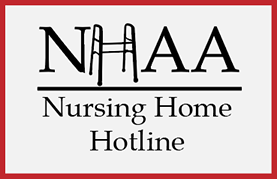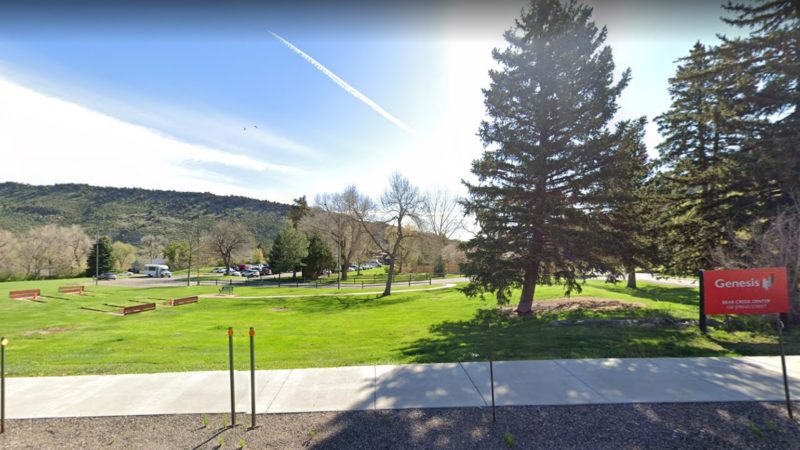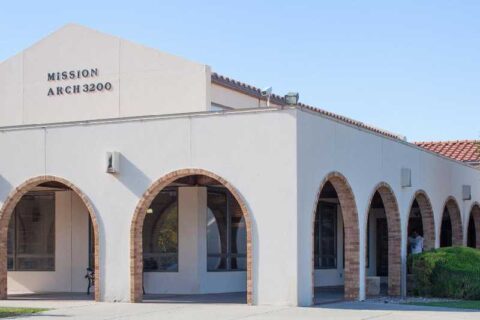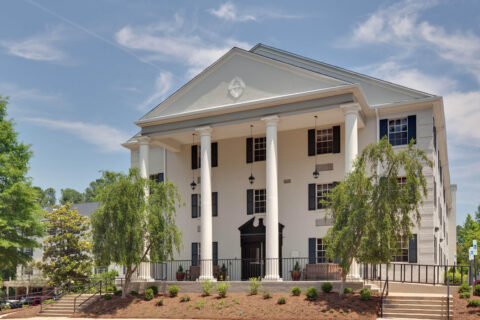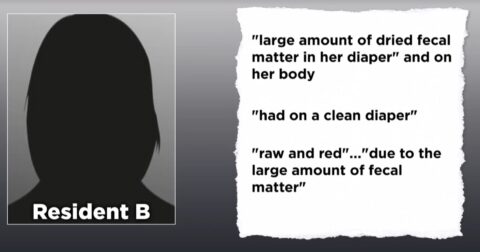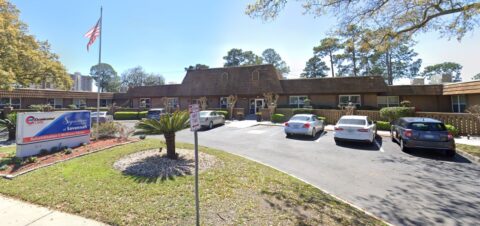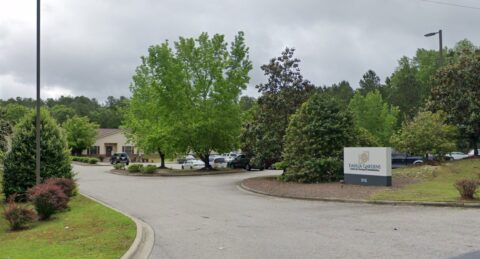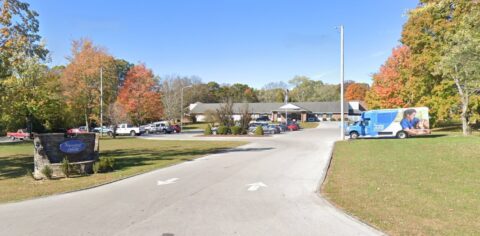State Findings:
**NOTE- TERMS IN BRACKETS HAVE BEEN EDITED TO PROTECT CONFIDENTIALITY**
Based on observations, record review, and interviews, the facility failed to take measures to prevent and heal pressure injuries and to prevent the development of additional pressure injuries, affecting four (#9, #7, #19 and #6) of six residents reviewed out of 37 sample residents. Specifically:
IMMEDIATE JEOPARDY IN PRESSURE INJURY MANAGEMENT
Resident #9, whose age, clinical condition and assistance needs put her at risk for pressure injuries, was identified with moisture associated skin damage (MASD) on her coccyx on 7/8/21. An order was obtained 7/10/21 for barrier cream. However, a skin check revealed the skin damage progressed to a pressure injury (not further described by staff) on 7/15/21, and then, per a change of condition evaluation, to a pressure injury with black eschar, tunneling, and foul smell on 8/1/21. On 8/12/21, a skin integrity report documented the pressure injury as a stage 4 pressure injury. The initial wound physician evaluation of the injury on 8/20/21 (during survey) confirmed a stage 4 wound with exposed muscle and undermining. There was an additional deep tissue pressure injury to the resident’s left heel.
Record review and interviews with administrative and direct care staff revealed the facility failed to take measures to prevent and heal the resident’s pressure injury to her coccyx and to prevent the development of the additional pressure injury to her left heel. The facility failed to comprehensively assess the resident’s risk of pressure injuries on admission and failed to develop a care plan with interventions to minimize these risks. Further, the facility failed to properly assess, document and monitor the coccyx pressure injury from 7/15/21 until 8/1/21, and, although the assessment 8/1/21 indicated the pressure injury was worsening, this failed to trigger notification to the resident’s physician, the Director of Nursing (DON) and the Assistant Director of Nursing (ADON)/facility wound nurse and placement of the resident on the wound round list to be seen by the wound physician. This, in turn, failed to trigger evaluation of interventions and revision of treatment orders. The treatment order for barrier cream to buttocks remained in place until 8/12/21 and as of 8/19/21, the resident lacked a care plan with measures to promote healing of the coccyx injury and to prevent the development of additional pressure injuries.
In addition, although treatment orders 8/12/21 included to ensure the resident is off the coccyx every two hours, and the wound physician documented on 8/20/21 that the pressure areas should be offloaded throughout the day, observations 8/19/21 for four hours and 8/24/21 for approximately two hours, revealed this order was not being implemented. The resident remained on her back with pressure on her coccyx. Finally, observations of wound care on 8/25/21 revealed care inconsistent with infection control measures to promote healing and prevent infection.
The findings above represented systemic failures in the facility’s management of Resident #9’s pressure injuries. Resident #9’s coccyx pressure injury was inadequately assessed, documented and monitored, care planned and treated to promote healing and prevent infection. The facility’s management of the resident’s coccyx pressure injury contributed to actual harm for Resident #9, and the potential for further, serious harm if not immediately corrected.
ADDITIONAL FAILURES IN PRESSURE INJURY MANAGEMENT
Residents #7, #6, and #19 also developed pressure injuries that were not accurately assessed, documented, monitored and treated to promote healing and prevent infection.
Cross reference F692 (nutrition), F600 (neglect),
Findings include:
I. Immediate jeopardy
A. Resident status
Resident #9, age 88, was admitted on [DATE]. According to the August 2021 computerized physician orders [MEDICAL RECORD OR PHYSICIAN ORDER] . Review of the admission nursing assessment revealed the resident did not have any pressure injuries on admission.
-The 7/15/21 skin check documented the resident had a pressure injury identified to the coccyx. Contrary to facility policy and administration interviews (see above), there was no evidence staff assessed, measured and described the area in a note, completed a risk management, a change in condition and a skin assessment and notified the physician, DON and ADON #1 or that the resident was put on the wound round list to be seen by the wound physician.
Further, although staff indicated the treatment continued to the coccyx, no treatment was documented on either the MAR or treatment administration record (TAR).
And, contrary to facility policy and administration interviews, the resident’s electronic medical record did not reveal evidence of a comprehensive care plan, identifying the pressure injury on the resident’s coccyx or reveal any interventions to assist in the healing of the pressure injury.
-The 7/22/21 skin check documented the resident had a previously noted skin injury/wound recorded as MASD to the coccyx. It indicated lotion was applied to the coccyx. However, there was no evidence staff assessed, measured and described the area in a note, completed a risk management, a change in condition and a skin assessment and notified the physician, DON and ADON #1 or that the resident was put on the wound round list to be seen by the wound physician.
-The 7/29/21 skin check revealed the resident had a previously noted skin injury/wound recorded of MASD and a pressure injury to the coccyx. As on 7/15 and 7/22/21, there was no evidence staff assessed, measured and described the area in a note, completed a risk management, a change in condition and a skin assessment and notified the physician, DON and ADON #1 or that the resident was put on the wound round list to be seen by the wound physician.
Although the RRNM said each resident’s skin should be assessed on their bathing day, a review of the certified nurse aide (CNA) task point of care (POC) documentation for July 2021 revealed the resident did not receive bathing services for the entire month of July. (Cross-reference F676)]
3. 8/1/21 to 8/20/21 – Worsening pressure injury – failure to conduct an assessment, timely communicate changes to the pressure injury and failure to implement a treatment to prevent the worsening of the pressure injury to a stage 4. Wound physician consult and discovery of two pressure injuries.
8/1/21 to 8/12/21:
-A 8/1/21 change of condition evaluation revealed there was a change in the resident’s wound from the previous week. It documented the pressure injury to the coccyx was 1 cm (centimeter) in size, was larger with black eschar, tunneling, a foul smell and a green tint to the wound bed.
Yet, contrary to facility policy and administration interviews, no care plan to address the resident’s coccyx injury was initiated with measures to address the resident’s stage 4 pressure injury, including the new order to ensure the resident was off her coccyx every two hours.
8/12/21 to 8/20/21
There were no further skin checks or documentation of the resident’s pressure injury after 8/12/21 until 8/20/21, contrary to facility policy for daily monitoring of the site, with or without the dressing.
C. Observations and interviews revealed continued failure of the facility to take measures to heal the resident’s pressure injury to her coccyx and to prevent infection.
1. 8/19/21 – Failure to position resident off her coccyx for approximately four hours, contrary to orders 8/12/21.
A continuous observation was conducted on 8/19/21 beginning at 9:14 a.m. and ending at 1:30 p.m. The following was observed:
-At 9:14 a.m. Resident #9 was observed lying on her back in the middle of the bed. The head of the bed was raised to a 45-degree angle with a Potus boot to the left foot.
-At 10:26 a.m. Resident #9 continued to lay in bed in the same position. Staff have not entered the resident’s room to provide repositioning.
-At 11:05 a.m. two certified nurse aides (CNAs) entered the resident’s room and closed the door. The staff left the room at 11:15 a.m. CNA #2 said they provided incontinence care for Resident #9.
-At 11:15 a.m., after the CNAs left the resident’s room, Resident #9 was lying on her back in the middle of the bed. The head of the bed was raised to a 45-degree angle. The resident was not repositioned following incontinence care.
-At 12:50 p.m. CNA #1 entered the room with the lunch tray. The meal was set up on the over bed table. CNA #1 left the room.
-At 1:30 p.m. Resident #9 was lying in the same position, on her back in the middle of the bed.
2. 8/23/21 – Failure to reposition the resident and dress her pressure injury, as ordered.
The regional resource nurse manager (RRNM) was observed on 8/23/21 at 3:30 p.m. to complete a skin assessment of Resident #9. The resident was positioned on her back. Her left foot had a small raised dry area and her left heel was blackened and measured 4 x 2.5 cm. The right heel was boggy and red. Her coccyx had a very large wound, red and open to air underneath the briefs she had on. The RRNM said the resident had a shower today and the nurse had not redressed the wounds yet.
The wound measured 4 x 2 cm and 3/4 cm deep. The red area around the wound was large and measured 13 by 10 cm with three smaller open wound areas around that. Posterior to the large wound was an open area that measured 1 x 1 cm. The open area next to that was 1 x 2 cm and another open area that measured 3 x 1.5 cm. RRNM put a clean brief on the resident but did not redress the wounds to the coccyx. She said the nurse would do that. She said the wound doctor was there on Friday (8/20/21) and wrote new orders but she did not have time yet to put those orders into the system for the nurses to follow. The resident’s spine was red (blanchable) and measured 10.5 x 5.5. She had a small red area to the right of the spine that looked like a red line.
Although a reddened area on the resident’s spine was found during the assessment, an area not identified 8/20/21 by the wound physician (see above), after the skin assessment, the resident was positioned on her back.
3. 8/24/21 – Failure to reposition the resident off her coccyx for approximately two hours and reports of the resident consistently not repositioned and a report that pressure injury was worsening.
-At 8:45 a.m., Resident #9 was observed lying on her back in the middle of the bed. The head of the bed was slightly raised at a 45-degree angle. The resident had a Potus boot to the left foot.
A continuous observation began at 10:45 a.m. and ended at 12:30 p.m.
-At 10:45 a.m., Resident #9 was lying in the center of the bed with the head of the bed raised to a 45-degree angle. The resident’s shoulders were halfway up the top of the mattress with the top of the resident’s head lying on the bottom portion of the pillow, putting pressure on the resident’s coccyx area. The resident’s feet were uncovered by the blanket. A Potus boot covered the resident’s left foot. No pressure relief measures were in place for the resident’s right heel which was observed to be boggy and red the day before. Further, no pillows or other devices were observed to assist with positioning of the resident off her back.
-At 11:00 a.m. Resident #9’s roommate was interviewed. She said the facility staff usually only entered their room when Resident #9 required changing. She said Resident #9 laid in bed all day and did not sit in her wheelchair very often. She said the resident’s current position was the position she was in on a regular basis. She said she had never seen the facility staff enter the room to reposition Resident #9.
-At 12:01 p.m. nurse practitioner (NP) #1, at the nursing station, asked registered nurse (RN) #4 for a description of the resident’s wound to the coccyx. RN #4 responded she had not seen the wound that day. She said Resident #9 was in bed and thought the CNAs would be getting her out of bed soon. NP #1 walked down the hallway and entered Resident #9’s room and closed the door.
-At 12:04 p.m. NP #1 exited Resident #9’s room and asked RN #4 if she could assist in rolling Resident #9 on her side so she could assess the resident’s wound. RN #4 said she did not have time and for NP #1 to push the call light so a CNA would come and assist. NP #1 re-entered the resident’s room and pushed the call light.
-At 12:07 p.m. Resident #9’s roommate exited the room and walked down the hallway, looking for a CNA. A CNA was observed walking down the hallway, pushing a mechanical lift. Resident #9’s roommate said the CNA said she was busy assisting another resident and told her to go to the front of the facility to look for another CNA to assist Resident #9.
-At 12:10 p.m. NP #1 walked out of Resident #9’s room and asked an agency nurse to assist her with turning Resident #9. The agency nurse and another nurse entered Resident #9’s room to assist NP #1. NP #1 exited the resident’s room at 12:18 p.m.
NP #1 was interviewed on[TRUNCATED]
Your Experience Matters
...and we want to hear it.
NHAA is here to assist families, residents, and the community by sounding the alarm on issues like those found above. This nursing home and many others across the country are cited for abuse and neglect.
If you have or had a loved one living in this nursing home or any other nursing home where you suspect any form of abuse or neglect, contact us immediately.
We have helped many already and we can help you and your loved one as well by filing a state complaint, hiring a specialized nursing home attorney or helping you find a more suitable location for your loved one.
You can make a difference, even if your loved one has already passed away.
Please give us a call at 1-800-645-5262 or fill out our form detailing your experience.
Personal Note from NHA-Advocates
NHAA shares with all the families of loved ones who are confined to nursing homes the pain and anguish of putting them in the care of someone else. We expect our loved ones to be treated with dignity and honor in the homes we place them. We cannot emphasize enough to family members of nursing home residents; frequent visits are essential to our loved ones’ well-being and safety.
If you are struggling and upset, click here to understand your options, or contact us through our contact form or call our toll free hot line number: 1-800-645-5262.
